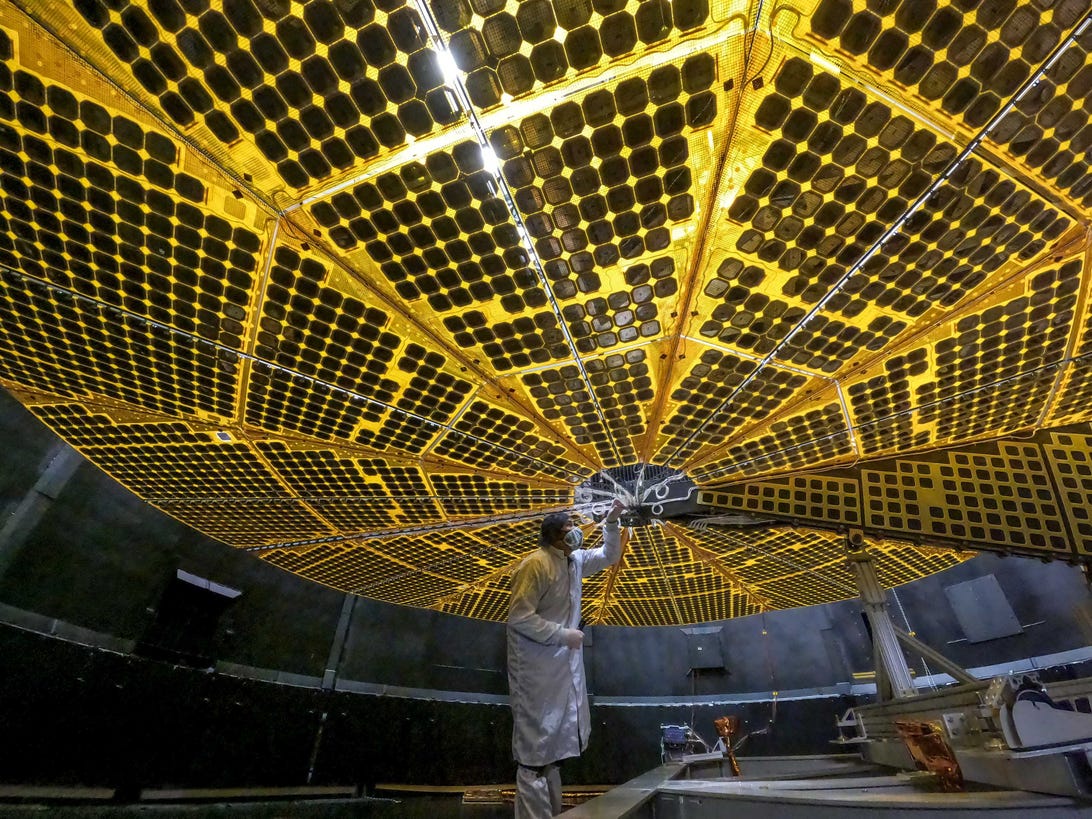NASA’s Lucy mission may have a solar array issue

A researcher working on Lucy’s solar panels.
NASA
On Saturday NASA had great reason to celebrate after the successful launch of Lucy, a spacecraft it hopes to use to investigate asteroids locked into Jupiter’s orbit. Less than 48 hours later, Lucy appears to have encountered its first roadblock. One of the craft’s two solar arrays, each of which are a set of solar panels Lucy will use to power its exploration, may not properly be locked in place.
“Lucy’s two solar arrays have deployed, and both are producing power and the battery is charging,” a Sunday NASA blog post reads. “While one of the arrays has latched, indications are that the second array may not be fully latched.”
“In the current spacecraft attitude, Lucy can continue to operate with no threat to its health and safety. The team is analyzing spacecraft data to understand the situation and determine next steps to achieve full deployment of the solar array.”
The two solar arrays were folded when Lucy launched, and are designed to unfurl like Chinese fans once the spacecrafy is in orbit. The arrays were expected to take 20 minutes to fully unfurl, which the mission’s principal investigator said would “determine if the rest of the 12-year mission will be a success.” The solar panels were successfully deployed 91 minutes after launch; now it’s just a matter of getting the second one to latch properly.
NASA’s associate director for science, Thomas Zurbuchen, tweeted that he was confident the array issue would be solved quickly.
“NASA’s Lucy mission is safe and stable,” he wrote. “The two solar arrays have deployed, but one may not be fully latched. The team is analyzing data to determine next steps. This team has overcome many challenges already and I am confident they will prevail here as well.”
Lucy’s ultimate goal is to explore the Trojan asteroids, a set of asteroids in Jupiter’s orbit that have never been studied up close before. These Trojan asteroids move as huge swarms, or camps, at the “Lagrangian points” in Jupiter’s orbit. The Lagrangian points are regions where gravity’s push and pull lock the camps in place, leading and trailing Jupiter in its journey around the sun in perpetuity.
The collection of amorphous space rocks is like a series of cosmic fossils, providing a window into the earliest era of our solar system, some 4.6 billion years ago. Lucy will act as a cosmic palaeontologist, flying past these eight different “fossils” at a distance and studying their surfaces with infrared imagers and cameras.
For all the latest world News Click Here

